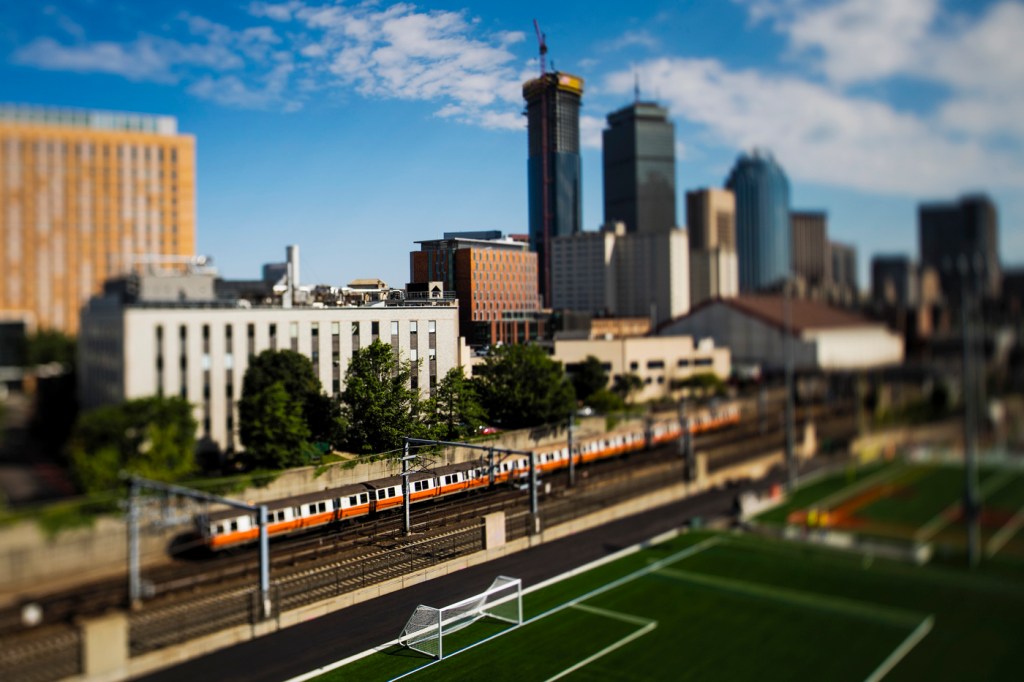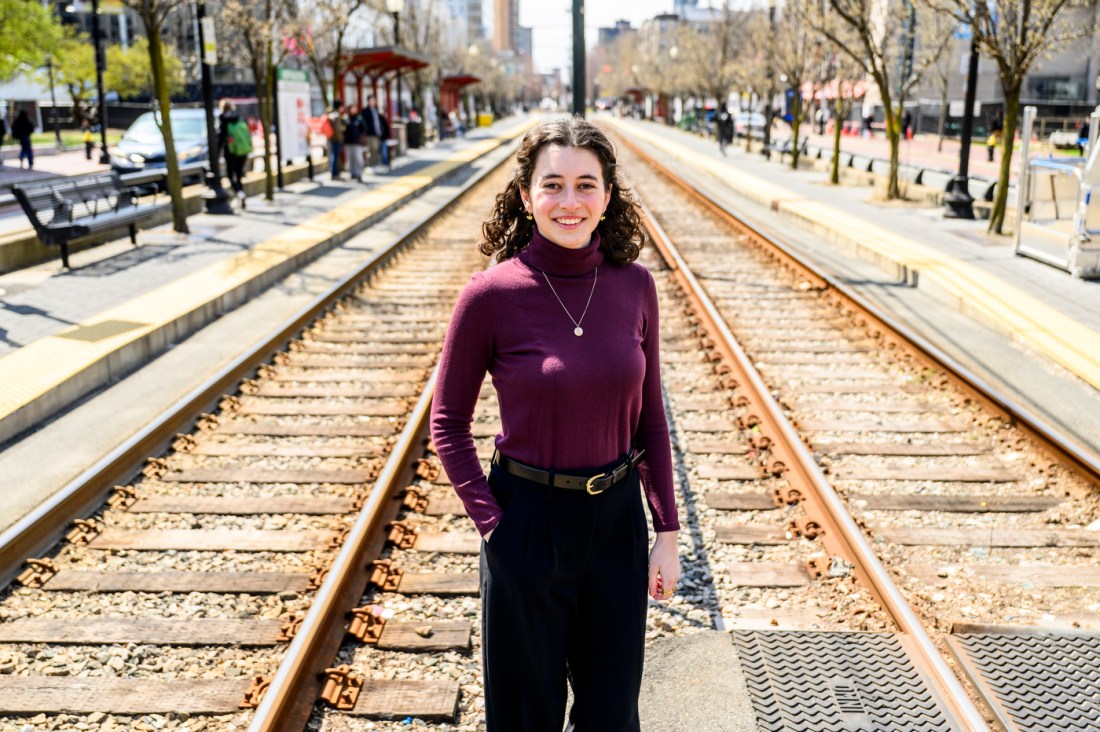How a student project turned into a working relationship with the MBTA
Students who set out looking for problems and solutions with mass transit in Boston wound up meeting with the decision-makers.

Nearing the end of their academic journey, the Northeastern students found themselves in a conference room with leaders of the Massachusetts Bay Transportation Authority — the provider of public transportation throughout Greater Boston.
The students had spent months investigating problems and devising potential solutions around the nation’s oldest subway system. Now their work was being put to a real-world test at MBTA headquarters in a meeting with nine officers, directors and managers who are responsible for everything from safety to engineering to technology and stations and fares.
“I came away really appreciating the ability to talk to decision-makers,” said Rachel Hocker, who is studying business administration and political science. “Seeing the inside workings of how these ideas could be implemented was an amazing experience. I left the meeting very energized and excited to hopefully work in a similar area outside of college.”The idea was to provide an experiential opportunity based on design thinking, said Stephen Golden, associate teaching professor of entrepreneurship and innovation at Northeastern, who was leading this aspect of the course “Innovation!”
Golden did not attend the student meeting with MBTA officials. He wanted the students to act independently.
“It’s really easy for them to wait for the professor to start the conversation, to moderate and narrate it,” Golden said. “I wanted them to figure it out. How do I introduce myself? How do I get a discussion going? How do I make my discussion engaging?”
Students worked through a five-step design thinking process of (1) empathizing with MBTA users, (2) defining the users’ needs and problems, (3) putting assumptions to the test while generating ideas, (4) beginning the process of creating solutions and then (5) testing those solutions.
Golden initially reached out to Phillip Eng, general manager and CEO of the MBTA (known in Boston as ‘the T’), who expressed support for the project. Danny Levy, the T’s chief customer officer, gathered a leadership group to meet with the students near the end of the project in April.

“She said, ‘This sounds like a great idea. You send your students over, they can pitch the problems and their solutions, and then get real-time feedback from executives at the T,’” Golden said.
A dozen teams of five students each explored the transportation network. It wasn’t enough for them to notice problems on their own. They were tasked with interviewing users of the system.
Hocker was part of a team that focused on Link Pass, a monthly ticket that offers subway and bus rides at a reduced price. The program isn’t well known among students, Hocker said, and the discounts expire after four months.
“We did the research and found there are about 300 current people who use that plan, which is less than 1% of the school,” Hocker said.
Editor’s Picks
Alter the pricing and more students will use the service, Hocker and her team figure. But arriving at a practical solution turned out to be more complicated than they imagined.
“When we talked to the MBTA decision-makers, they said legislation is involved in changing prices,” Hocker said. “You have to prove that lowering the price in one area won’t disproportionately affect another segment of users.”
So the group adapted to another idea. How about developing an app for students that would enable them to better understand which programs (including Link Pass) are available while also simplifying payments — perhaps by linking those programs to student Husky cards?
“We were pivoting to what is important,” Hocker said. “This is an untapped market. Our hypothetical app could help integrate the Northeastern system with the T system.”
Omar Jibrell’s team focused on signs for the MBTA’s Green Line that serves Northeastern’s Boston campus. The team proposed design solutions that would provide riders with more information on their train’s progress and upcoming stops. The T leadership was receptive, Jibrell said.
“It was so much better than I expected,” said Jibrell, a computer science major. “I thought they would just kind of hear us out and be like, ‘Oh, that’s a good idea.’ But they really wanted to see our updates and our progress.”
Levy welcomed the collaboration with the students.
“The title of the class caught our attention: Innovation! It struck a chord,” Levy said. “We saw this as something new and an opportunity to interact with students on our turf and hear their ideas and understand how they reached their recommendations.
“The students were required to reach out to us, and they did. We received many emails with specific questions, so we welcomed the chance to gather the class together at our offices and engage with them.”
It was a constructive experience for both sides, Levy said.
“It was clear the students did their research,” Levy said. “The Q&A became a dialogue and a sharing of ideas. That’s how I measure success. At no point was there a lull in the discussions. The students keyed on to issues that are on our radar.
“The Innovation! students were well prepared,” Levy added. “We enjoyed spending the afternoon with them and discussing new ways of doing business and considering their take on how we operate the transit system.”











